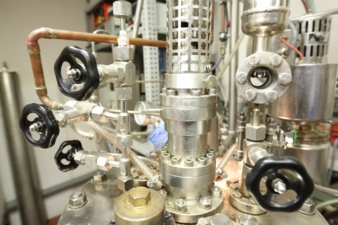23/01/2015 — auf Deutsch lesen
ITCF Denkendorf: Textiles tame the flames
Textile polyamide surfaces are widely used in clothing fabrics and on home textiles such as carpets and wall-coverings. High levels of tensile strength and good resistance to solvents mean that polyamide technical textiles are also suitable for a wide range of industrial applications such as clothing for paper machines and conveyor belts.
In all of these fields, flame-resistance is of considerable importance. Until now, polyamide fibres have had to undergo post-production treatment: a chemical substance is applied to the outside of the fibres as an ‘armour’. This type of flame protection is not, however, permanent. The finish is worn away over time, whether through washing or by mechanical action, and flame-resistance becomes steadily weaker.
Researchers at ITCF Denkendorf are building the flame-resistant elements directly into the polymer chains as part of the condensation process. The flame protection is then firmly integrated chemically and thus remains permanently effective. The protective components provide excellent flame resistance, yet they are halogen-free. A patent application has already been registered for the complex technical process.
The bunsen burner flame works its way through the bright polyamide yarn fabric. Hot droplets of molten material drip onto the base layer. A process taking place under the controlled conditions of a flame test can have dramatic effects in real life. That is why researchers at ITCF Denkendorf (the German Institute for Textile Chemistry and Chemical Fibres) are working on improving the flame-retardant properties of polyamide textiles.





